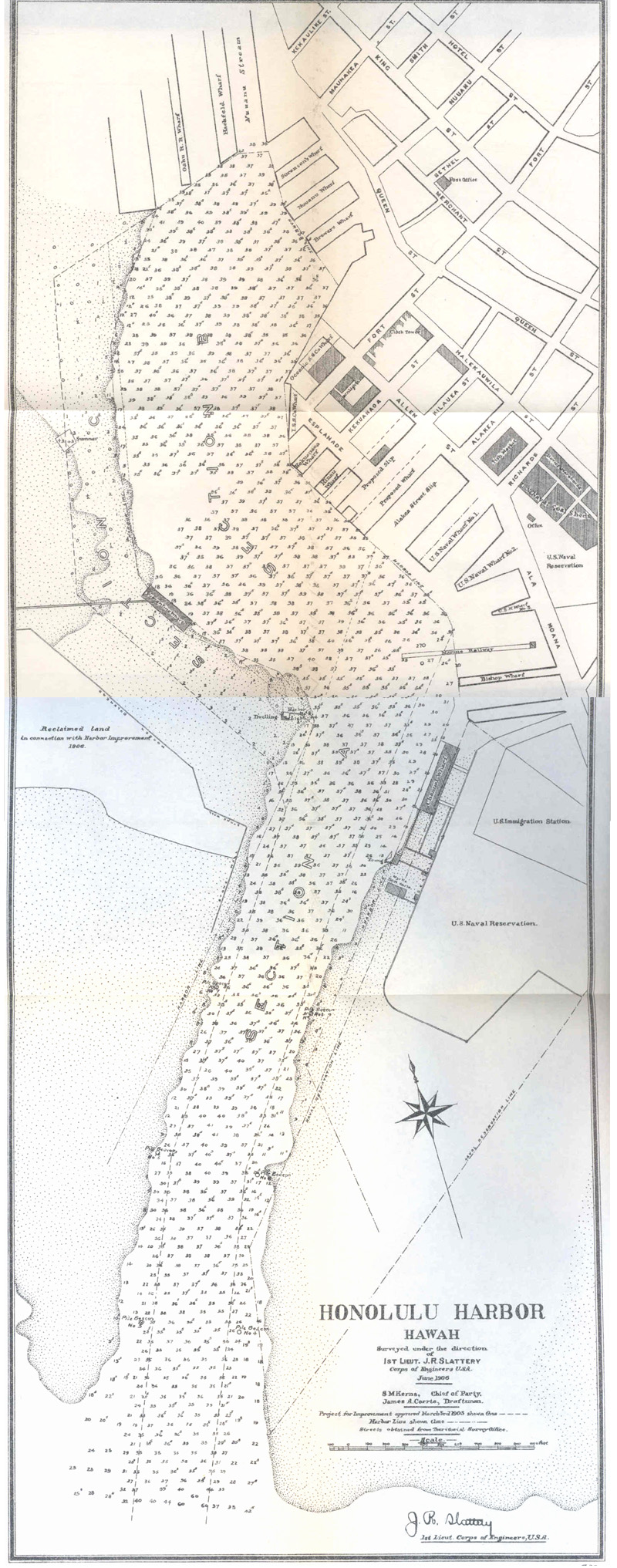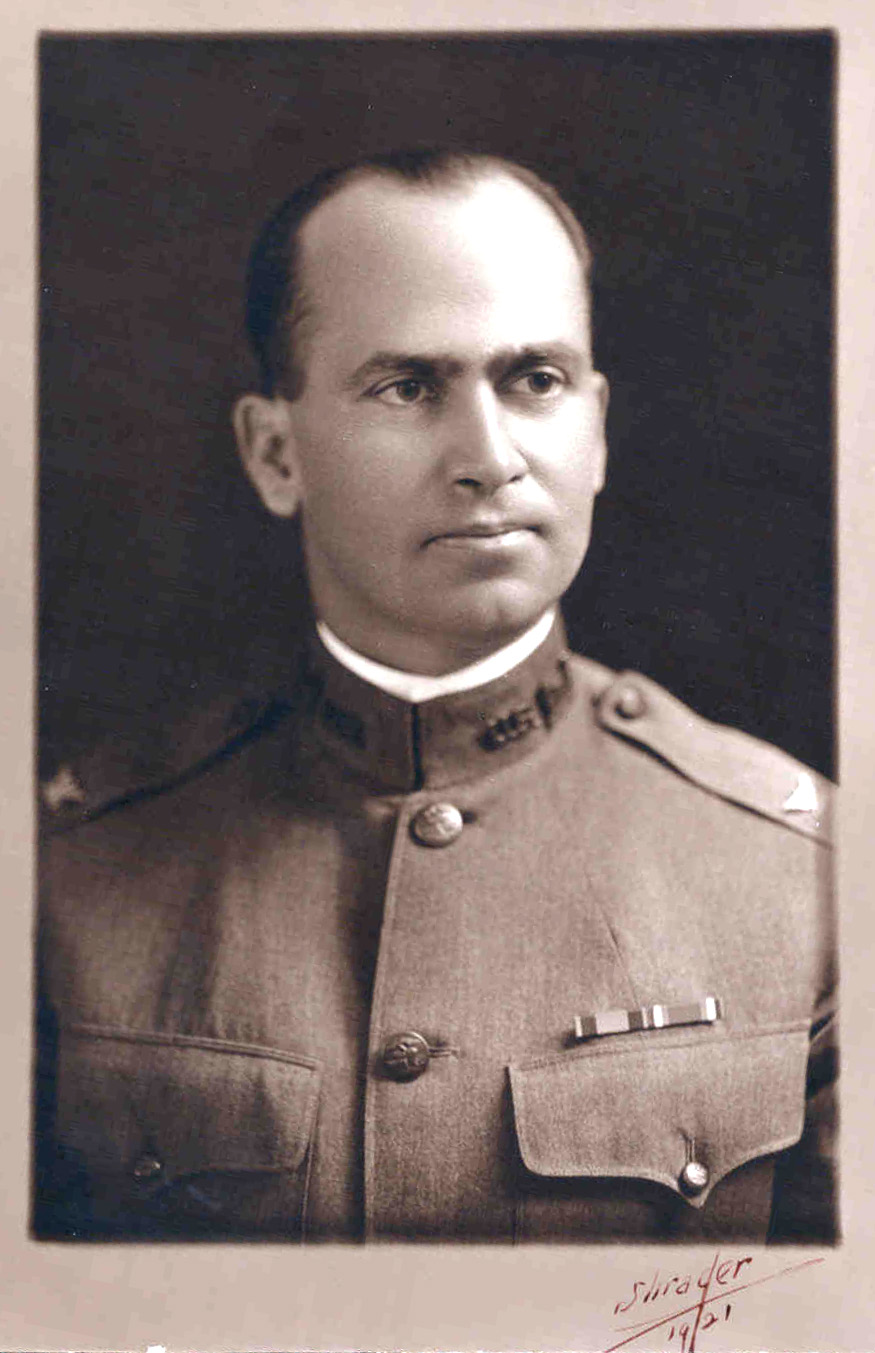|
The Honolulu District celebrated its one-hundredth birthday on April 15, 2005, but the engineer presence in the Hawaiian Islands actually began at least seven years earlier in 1898. Engineer officer Maj. William C. Langfitt led a force of American soldiers, including the Third Battalion of U.S. Volunteer Engineers, which landed on the islands and established itself at Camp McKinley near Honolulu. Before he left the islands in 1899, Major Langfitt drew up a defense plan for Pearl Harbor and presented it to the chief of engineers.
In 1901 the chief of engineers, with the War Department’s approval, established a board of engineer and artillery officers to study Oahu’s defense requirements. The board also recommended that Pearl Harbor be given first priority for the construction of seacoast fortifications, but included some defenses for Honolulu Harbor.
|

Camp McKinley, Kapiolani Park,
Honolulu, 1898
Courtesy of Hawaii State Archives |
While the Corps of Engineers was planning the seacoast defenses of Oahu, it also received a request from local authorities in Hawaii to establish harbor lines in Honolulu harbor. Harbor lines regulate where piers and other structures can be built. The chief gave the task to Major Langfitt, who held public hearings and made recommendations. The new lines were controversial, however, so the chief of engineers asked for a new board that had to be composed of artillery officers because Major Langfitt had left the islands.
The River and Harbor Act of 1899 appropriated money to dredge the entrance channel to Pearl Harbor. Because there were no engineer officers in Hawaii in 1901 when the Northern Pacific Division in San Francisco awarded a dredging contract, the division engineer sent a civilian to supervise the work. When the original contractor from California lost its dredge in a storm, it turned the contract over to a local company. It was becoming difficult to supervise problem-ridden projects from the distant division office.

Alexander Young Building, Honolulu, where Slattery opened the
district office. During World War II, the district reoccupied the structure. Courtesy of Hawaii State Archives
While planning coastal fortifications, establishing harbor lines, and dredging were important activities in the new American territory, it was the need for better lighthouses that brought a permanent engineer presence to the islands. Although lighthouse construction and maintenance were the responsibility of the Treasury Department, the Corps of Engineers had played a large role in the program since the 1850s. At the beginning of the twentieth century, an engineer officer commanded the lighthouse district that covered the entire Pacific coast.
 When Senate subcommittee members surveying the needs of the United States’ new territories could not enter Honolulu harbor at night because the ship’s captain could not distinguish navigation lights from the lights of the city, the federal government launched a large new lighthouse construction program for the islands. The Pacific lighthouse district engineer sent 1st Lt. John R. Slattery to Hawaii in 1904 to supervise the construction. Slattery graduated from West Point in 1900 and served in the Philippines for two years.
When Senate subcommittee members surveying the needs of the United States’ new territories could not enter Honolulu harbor at night because the ship’s captain could not distinguish navigation lights from the lights of the city, the federal government launched a large new lighthouse construction program for the islands. The Pacific lighthouse district engineer sent 1st Lt. John R. Slattery to Hawaii in 1904 to supervise the construction. Slattery graduated from West Point in 1900 and served in the Philippines for two years.

John R. Slattery
As the Army engineer present in the islands once again, Slattery soon received assignments from the chief of engineers when Congress appropriated money for coastal defense work and improvements to Honolulu Harbor. By the spring of 1905, Lieutenant Slattery’s various duties coalesced into an engineer office reporting to the Northern Pacific Division. As work directly and indirectly under the Corps of Engineers grew in the early years of Hawaii’s transition to becoming an American territory, the advantages of a permanent engineer presence on the islands became obvious.
Lieutenant Slattery’s report of his yearly activities first appeared in the Annual Report of the Chief of Engineers for 1905, and the first engineer map of Hawaii printed in the Annual Report a year later showed the harbor lines of Honolulu Harbor. The Corps of Engineers had arrived on the islands to stay.
Survey map of Honolulu Harbor by 1st Lt. Slattery, 1906
* * *
April 2005